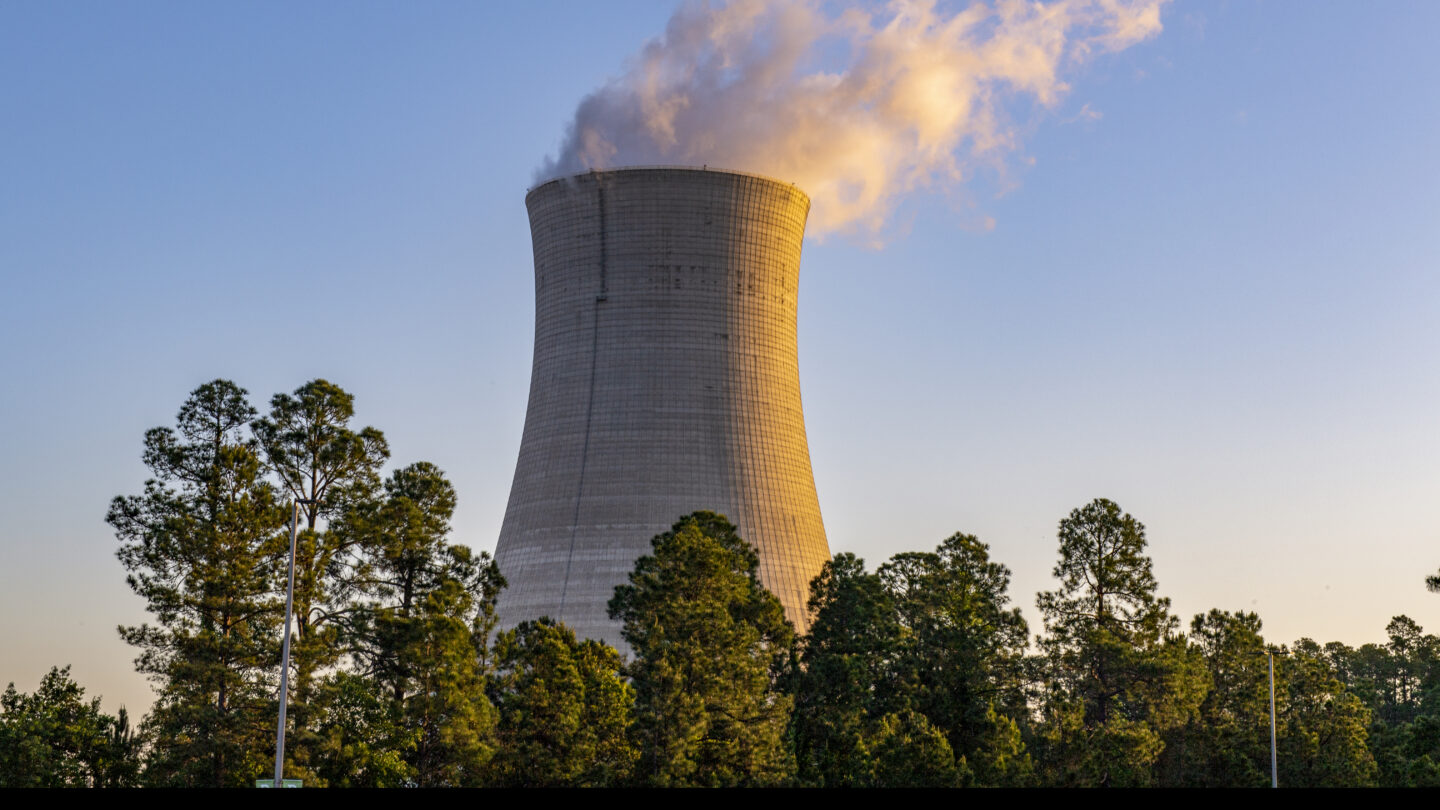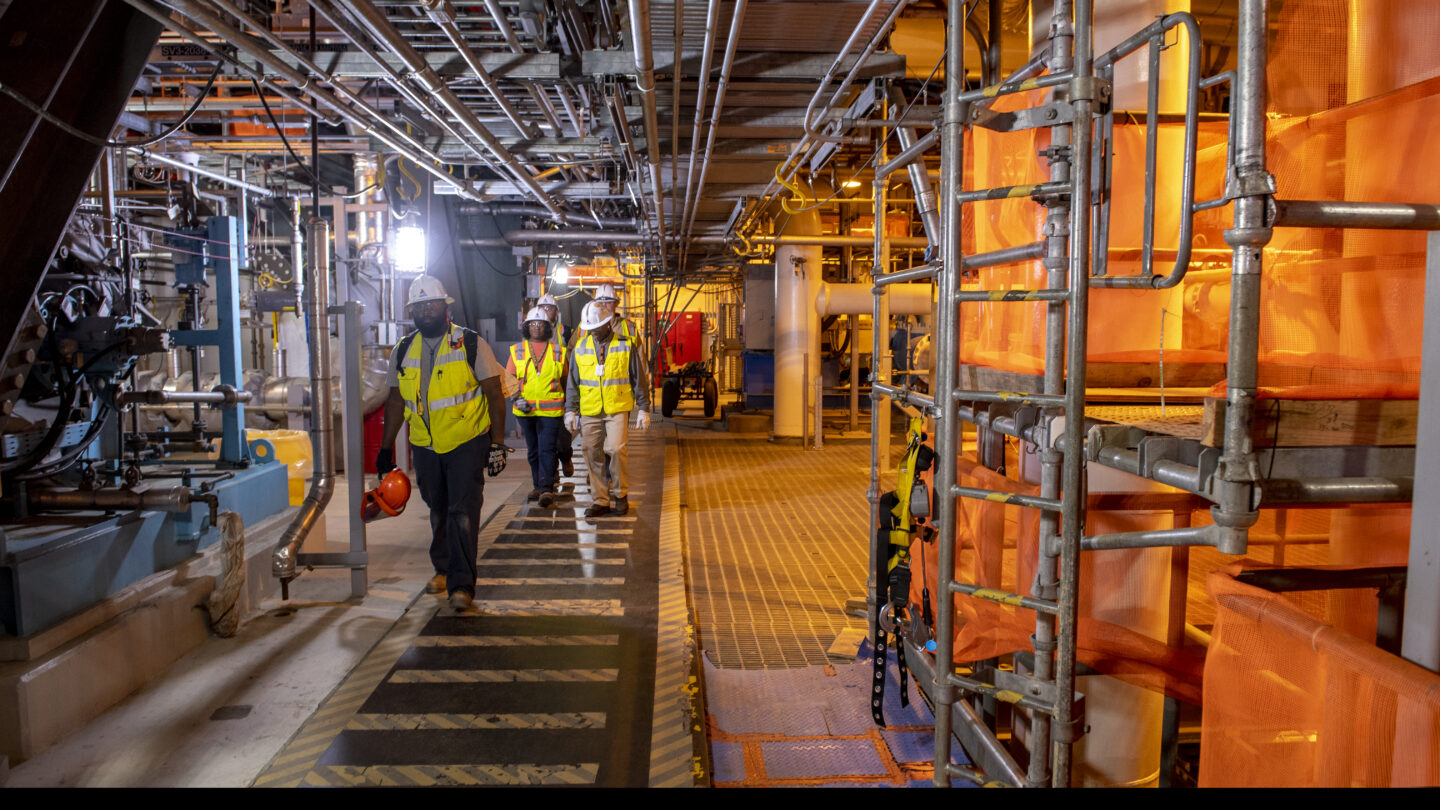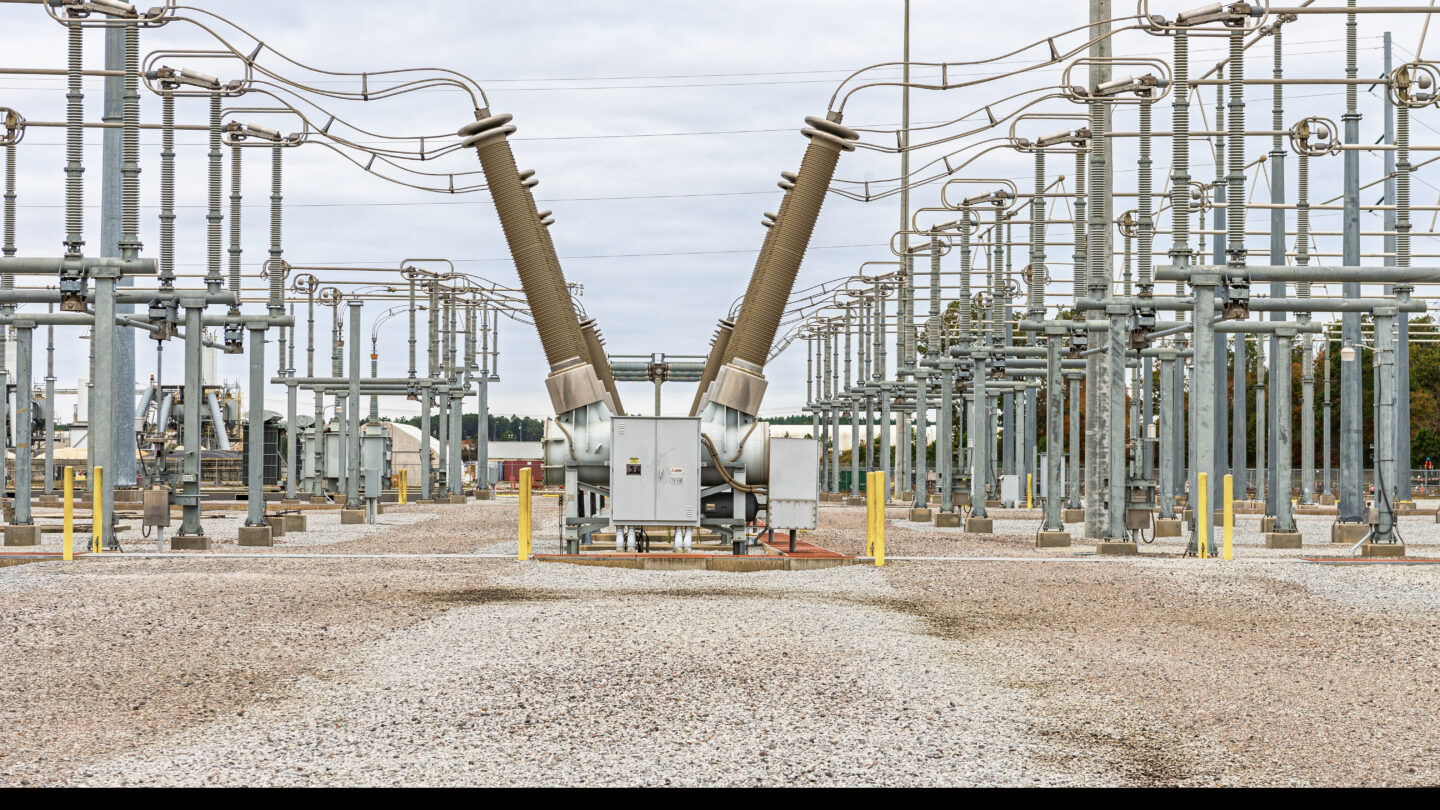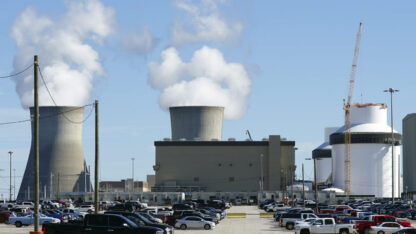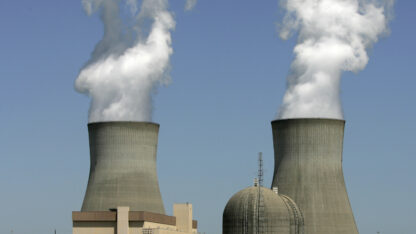This coverage is made possible through a partnership with WABE and Grist, a nonprofit, independent media organization dedicated to telling stories of climate solutions and a just future.
The first new nuclear reactor built in the U.S. in more than 40 years is now up and running in Waynesboro, Georgia.
The completion of Plant Vogtle Unit 3, the first of two reactors being built at an already-existing nuclear plant on the Savannah River, is a major milestone not just for the long-delayed project itself, but for nuclear energy in the United States.
Timeline information provided by the Associated Press
After more than a decade of construction and spiraling costs, the first of the two new reactors started producing power at full capacity in May. It’s expected to come online this month after a final round of tests.
The new units at Plant Vogtle were the first nuclear construction approved in the country in decades and are the nation’s only new reactors in progress.
“I’m confident that the state of Georgia and our customers, our company, the world will be so proud of the work that we’ve done in bringing Vogtle online,” said Chris Womack, the former CEO of Georgia Power and now head of its parent, Southern Company, at the company’s annual meeting last month.
But while the project was once seen as the future of U.S. nuclear, the story of Vogtle has gotten more complicated as construction has stretched over a decade and costs have continued to climb.
Plant Vogtle is now part carbon-free promise, part cautionary tale.
“In a rational world, this would be the last nuclear power project that would be built in the United States,” said University of British Columbia physicist and nuclear power skeptic M.V. Ramana.
When the Nuclear Regulatory Commission approved the Vogtle construction in 2012, the project was hailed as the dawn of a new nuclear age.
“The resurgence of America’s nuclear industry starts here in Georgia, where you’ve just got approval for the first time in three decades to build new nuclear reactors,” then-Energy Secretary Stephen Chu told workers at the plant as construction got underway.
In the intervening decade, the climate crisis has accelerated and the need to decarbonize has become ever more urgent, making nuclear power more appealing. Since renewable energy sources are often intermittent – relying on the sun shining or the wind blowing – many see nuclear plants as an important complementary source of power. Each Vogtle reactor can generate enough electricity to power half a million homes without burning fossil fuels.
“As we’re closing coal plants, we have to replace them with something,” said Tim Echols, a commissioner on the Georgia Public Service Commission. The agency regulates Georgia Power and oversees the company’s spending on Plant Vogtle.
That switch can make a big dent in climate-warming emissions, said Georgia Tech public policy professor Marilyn Brown, who tracks the state’s emissions. She said eventually, both new nuclear units could help Georgia Power cut emissions by as much as five to ten percent.
“That’s a big number,” Brown said.
But throughout its decade of construction, the project has also been plagued by cascading delays and climbing costs. The first reactor was scheduled to come online in 2016; it’s hitting that milestone seven years later. The total price tag has more than doubled to over $30 billion.
Now, utilities are looking for nuclear projects that would have a more reliable cost and schedule, said John Kotek of the Nuclear Energy Institute. He said companies are focusing on smaller reactors that would generate hundreds of megawatts, instead of thousands like the Vogtle reactors.
“Part of the motivation for the small modular reactors here in the U.S. is that they come with a lower price tag,” Kotek said. “They’re just physically smaller machines that cost less to build. They’ll take less time to get into operation.”
But critics say that was the promise of Vogtle too, that it would be a new kind of reactor that’s cheaper and faster to build. Ramana said there’s no reason to think small modular reactors will be different.
“The lesson I think we should learn from this is: what works on the computer doesn’t work in the real world,” he said.
The Plant Vogtle reactors are a design called AP1000, which developer Westinghouse said could be built cheaper and faster thanks in part to modular construction, relying on factory-made components instead of building from scratch on-site.
But the cost estimate jumped immediately when it came time to actually build, Ramana said, and only climbed from there. All of this was predictable, he said, because similar issues have plagued most other nuclear projects.
In fact, it was predicted at the time: the Public Interest Advocacy staff of the Georgia Public Service Commission warned that the costs could skyrocket back in 2008. They advocated for a risk-sharing mechanism to incentivize Georgia Power to keep the construction costs down and opposed plans to bill customers for the Vogtle project while construction was underway.
Both proposals failed. Thanks to a 2009 state law, Georgia Power ratepayers pay a monthly Nuclear Construction Cost Recovery fee to cover the project’s financing costs. They will begin paying an additional monthly charge after the new Plant Vogtle unit comes online this month – the third bill increase for Georgia Power customers this year. More Vogtle costs will show up on customers’ bills later.
“It’s absolutely nonsensical that they are going to have to bear the burden of this gamble with this kind of technology,” said Jennifer Whitfield, a senior attorney with the Southern Environmental Law Center.
Instead of the risk-sharing idea, the Public Service Commission has the ability to review Plant Vogtle costs once both units are online. Advocates are gearing up for a fight over how much of the cost of Plant Vogtle’s ever-rising price tag is prudent.
Going forward, Whitfield said, there are more cost-effective ways to decarbonize – like energy efficiency improvements and solar, which is now cheaper than gas, coal and nuclear.
Proponents see nuclear as a necessary complement to renewables, providing what’s known as baseload power all the time, instead of only when the sun is shining or the wind is blowing.
“A new nuclear project on its own may look more expensive than for example, you know, a utility-scale solar plant,” said Kotek. “But that nuclear facility is going to deliver a lot more value. It’s going to deliver things that other technologies can’t.”
But that’s old-fashioned thinking, Ramana said.
“They just want to have coal plants without coal. And they’re thinking about solving it that way. We’ll never solve the climate problem that way,” he said. “We need to rethink how we’re going to manage the grid. There’s not going to be a silver bullet solution.”
